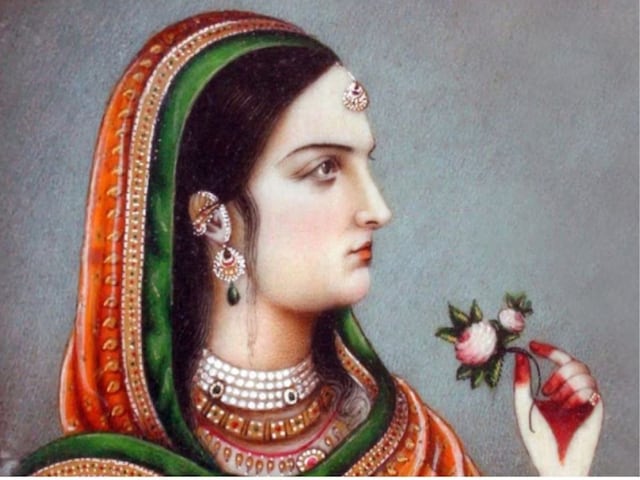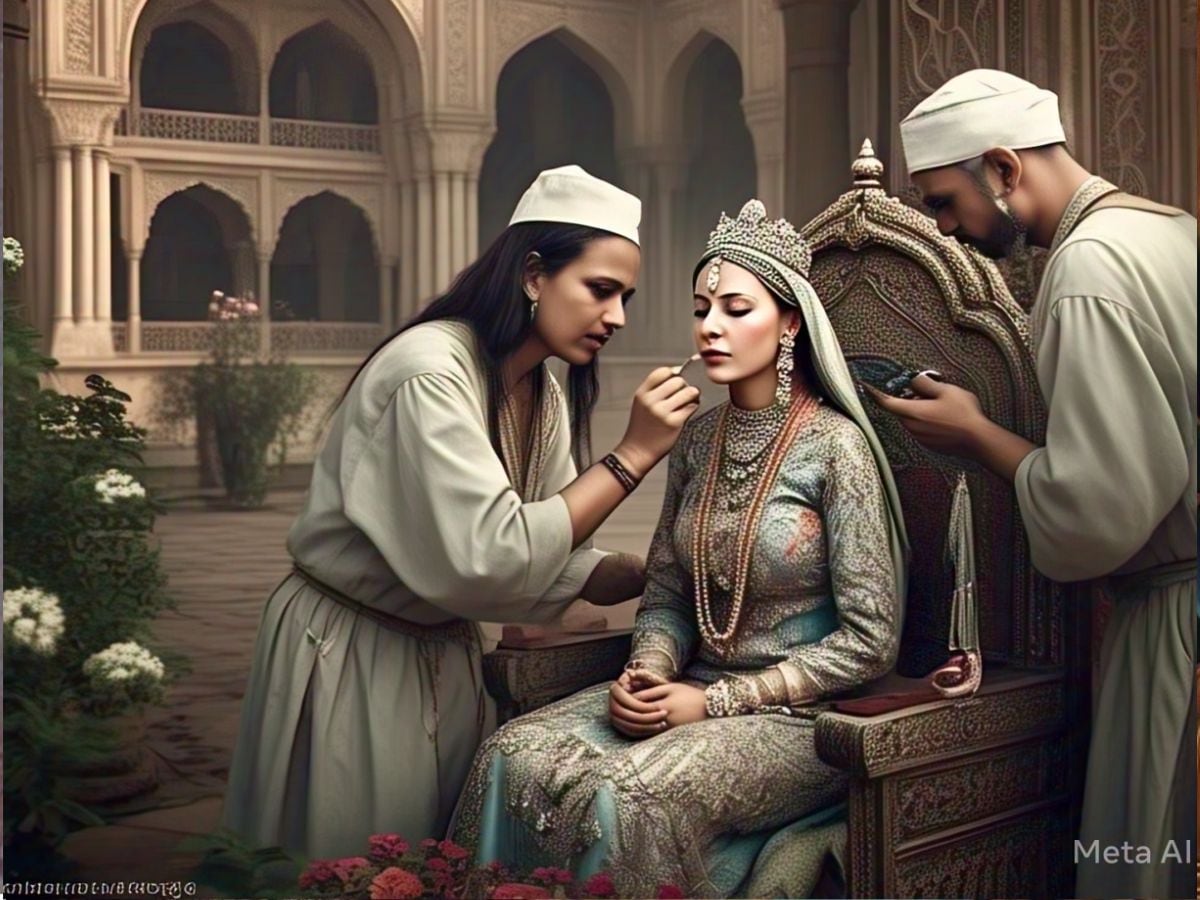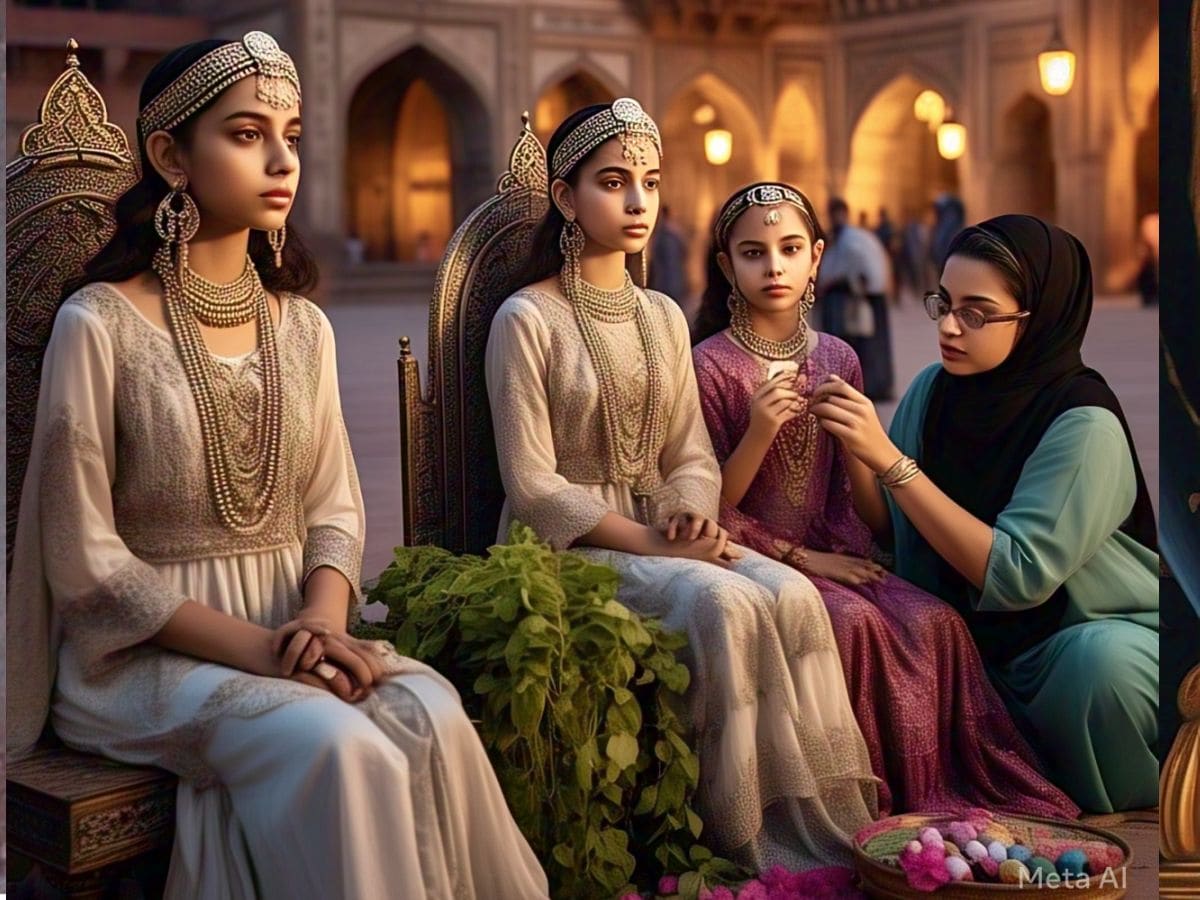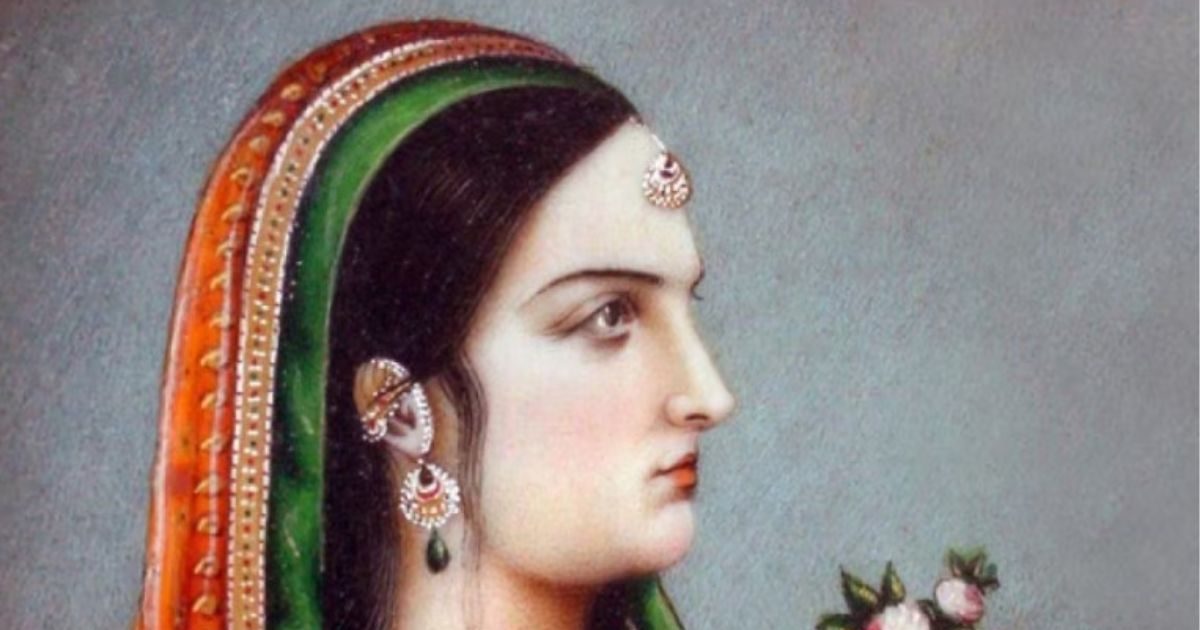Last updated:
Mughal Queens and Princesses Beauty Secret: The stories of Mughal Darwar queens and beauty of the princess also make people drunk across the sea. What was the secret of the beauty of the queens and princess of this Mughal Darwar, what …Read more

Pettings of Mughal Queen Nur Jahan.
Secret of mughal queens and princesses beauty: There was no other empire more wealthy and virtuous than the Mughal Empire on the whole earth in the medieval period. In 1530 AD, Babur defeated Ibrahim Lodi and captured Delhi’s Takhtotaj and since then Aurangzeb’s death is known for his luxurious Shano-Shaukat till 1707. India had 25 percent of the world’s economy. The tax of the entire state is filled in the bag of Mughals queens and princesses. Every queens and princess had their own prizes. The story of the luxury of the Mughal Empire is hidden in Takhto-Touses than that there are no stories of the beauty of Mughalia queens and princesses. Across the sea, stories of the beauty of Mughal carpet queens and princesses were heard. But have you ever noticed how many expensive makeup products used to decorate the queens of the Mughal Empire.

Mughal Begum. Ai’s picture
Babur’s rule remained for only four years. Babur’s son Humayun’s life was spent running from here to there. The story of the luxury of the Mughal Empire begins with the commencement of Akbar’s rule at the age of 13 in 1556. Since that time, stories of the beauty of Mughalia queens and princess are famous. However, Babur’s daughter and Akbar’s aunt Gulbadan Begum laid the foundation of the beauty of the queens and the princess. After this, the stories of Jahangir’s Begum Nur Jahan are famous all over the world.
Noor Jahan is known for the modern invention of perfume in this country. One day Nur Jahan was bathing in the hammam with rose petals that suddenly he saw oil -like substance floating on the water. Nur Jahan herself became drunk by her fragrance. Then he knew that perfume can be made with rose leaves. After this, she assigned the task of making perfumes with many aromatic leaves and flowers including roses and by applying it, it becomes fascinated. All the queens and shehzadis of the empire started using perfumes.

Mughal Begum. Ai’s picture
The women of Mughal Darwar used to use very expensive beauty products. Initially she used Central Asian beauty products for makeup. For this, she used to clean hands, face and her feet in the morning and perfume in them. Every morning she used to shine the feet and hand. She used neem teeth and powder to clean teeth. This powder contains powder of beads, trinamani, musk, camphor and aromatic alloswood. She also used these things for makeup. The women of Mughal Darwar used paan to paint lips. She used to chew paan often. She used to apply black powder in gums.

Mughal Begum. Ai’s picture
For the beauty of the face, Mughal Darwar queens and princess used to use saffron. Along with this, she used to apply many things used in the kitchen. Begum often used saffron powder in milk and used it to brighten the skin. Saffron is known for antioxidants and anti-inflammatory properties. It wakes up the puberty of the skin again. The secret of her spinish skin was the powder of saffron and other expensive gems, which she used to do to enhance her beauty.
Sandalwood has been used to brighten the face for centuries. The women of Mughal Darwar also used sandalwood a lot. Mughal ranks used to use Sanjeevani in sandalwood powder, mixing it with emerald, firoza and pearl powder and applied as eye makeup. She used to put a slight mixture of turmeric with rose water and milk in sandalwood and apply this Ayurvedic paste for natural glow on her face and body, which also protected them from tanning.

Mughal princesses. Ai’s picture.
The women of the Mughal court had a keen interest in Ayurvedic and Unani remedies. She used various herbs and materials in the prescriptions of her routine and beauty. One such materials used by the Mughals were Moringa leaves, initially used in the field of medicine. Moringa i.e. drumstick leaves soon became cosmetics for Begums.
